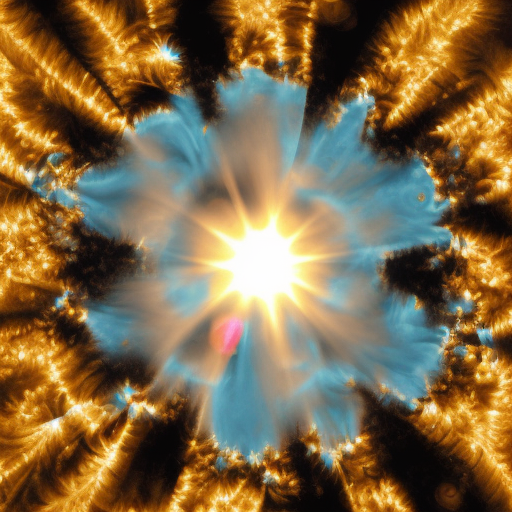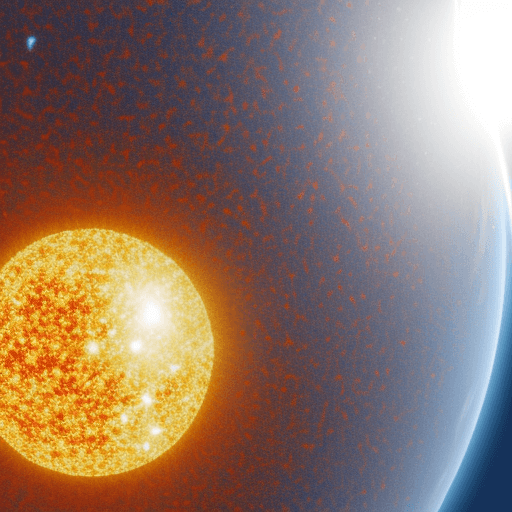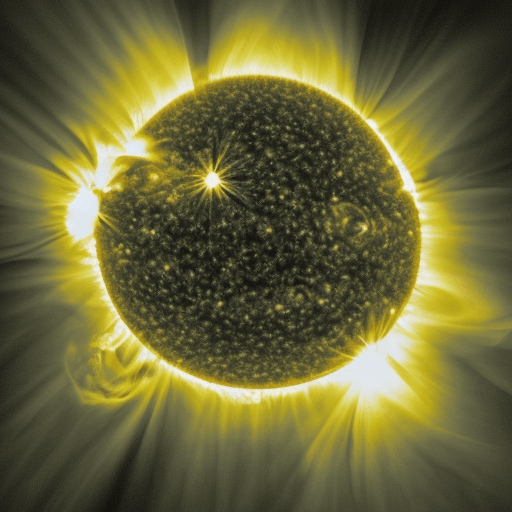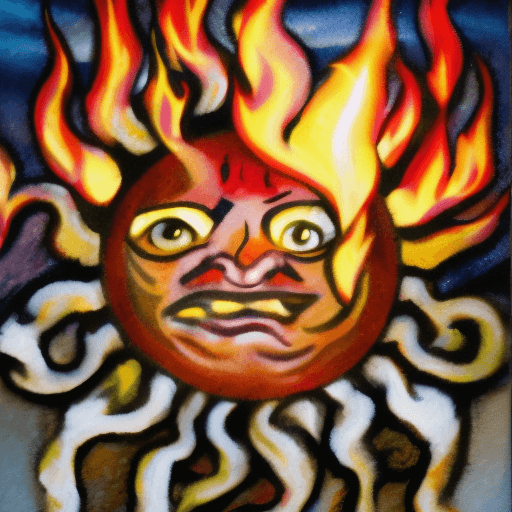Is the sun fire?
According to some people, the answer is yes. There are a number of theories out there about what is happening to our sun, and it can be hard to know what to believe.
In this blog post, we will explore the different theories about the sun’s fire and discuss the evidence for and against each one.
We will also talk about what could happen if the sun really is on fire. Stay tuned!
No, the sun isn’t fire.

Explain It To A Child
No, the sun is not on fire. The sun produces heat and light through a process of nuclear fusion.
The sun is a star and is huge compared to Earth. It’s made up of plasma (ionized gases), which is why it emits so much light and heat.
Plasma is the fourth state of matter, after solid, liquid, and gas. When heated enough, the atoms in a gas break down into their component parts (protons, electrons, and neutrons).
These protons and electrons then recombine to form atoms of different elements and release energy in the form of light and heat.
This is what happens inside the sun, and it’s this process that makes it shine!
Is the sun fire

Is the sun on fire? The short answer is no, the sun is not on fire. However, the sun does produce heat and light through a process of nuclear fusion.
In this process, atoms of hydrogen are combined to form atoms of helium. This releases a huge amount of energy in the form of heat and light.
How much of the sun is plasma?

The sun is mostly plasma, a superheated state of matter consisting of free electrons and atomic nuclei. This Plasma makes up about 99.999% of the sun’s total mass.
The other 0.001% consists of gas and dust particles that are ejected from the sun’s surface by solar flares and other eruptions. The sun’s plasma is so hot that it produces a tremendous amount of energy, which is released in the form of sunlight.
This energy drives the earth’s climate and powers photosynthesis which helps to support all life on our planet. Without the sun’s plasma, there would be no life on earth.
The different theories about the sun’s fire

For centuries, humans have looked at the sun and wondered how it could be so incredibly hot. Early scientists proposed a variety of theories to explain the sun’s fire, and while some of these ideas have been disproven, they continue to provide insights into our understanding of the sun.
One theory, known as the steady state theory, suggested that the sun has always been burning and will continue to burn indefinitely. This theory was eventually disproven by evidence that the sun is slowly running out of fuel.
Another theory, known as the gravitational contraction theory, suggests that the sun’s gravity caused it to slowly contract, increasing its temperature in the process.
While this theory is no longer widely accepted, recent research has shown that it may be partially responsible for the sun’s heat.
Whatever the true cause of the sun’s fire may be, one thing is certain: it continues to amaze and inspire us.
What could happen if the sun is on fire
It’s hard to imagine, but if the sun were to catch fire, it would have disastrous consequences for our solar system. The sun is huge and extremely hot, so if it were to ignite, the resulting explosion would be unimaginable.
The fire would consume all of the planets in its path, including Earth. With no sun to provide warmth and light, our planet would quickly become a frozen wasteland.
All life would eventually die off, leaving behind a dark and empty universe. So let’s hope that the sun never catches fire!
Is the sun hotter than fire?
The sun is one of the hottest objects in our solar system. In fact, its surface temperature is around 10,000 degrees Fahrenheit! That’s much hotter than any earthly fire.
However, it’s important to remember that the sun is also very big. Its heat is spread out over a huge area, so while its surface may be extremely hot, its overall temperature is actually quite cool.
In comparison, a small candle flame can reach temperatures of over 1,000 degrees Fahrenheit. So while the sun may not be as hot as aflame, its enormous size more than makes up for it.
So while the sun is not technically on fire, it is producing a lot of heat and light!
Article Sources
Jacks of Science sources the most authoritative, trustworthy, and highly recognized institutions for our article research. Learn more about our Editorial Teams process and diligence in verifying the accuracy of every article we publish.
